Melissa Wraxall is an artist living and working in the UK. She has recently begun to exhibit series of abstract paintings in a marked change of direction from her previous more narrative style, dealing with notions of memory and expression. Kate Burbidge discovers what lies behind this new chapter and how the artist’s creative praxis has evolved, both on and off the canvas.
INTO ABSTRACTION
Kate: What provoked the move to abstraction? Was it a sudden or a gradual change?
|
Melissa: I’ve been exploring abstraction from time to time over the years, inspired by music, or the work of other artists, but this is the first time I have pursued it in a sustained or coherent way. My previous work was already an expressive response to photographs, focussing on gesture and a combination of chance and control, and I still paint in that way, just without the descriptive element.
A couple of years ago, I saw a reconstructed vintage film which absolutely fascinated me. Every so often the figures melted and abstracted into drips and splashes as sections of the emulsion had been badly damaged. I made a series of works based on some digital stills that I took (Ned series), and this sparked further experimentation with pure abstraction, and, using some unconventional tools, seeing what more I could do with the material substance of paint.
I find painting and drawing is my way of keeping some kind of emotional equilibrium. I started experimenting with abstraction in late 2018, but abstraction seems appropriate for this weird, incomprehensible time. Just being able to get “in the zone” and be absorbed by manipulating colour, form and texture. It’s a kind of meditation for me. |
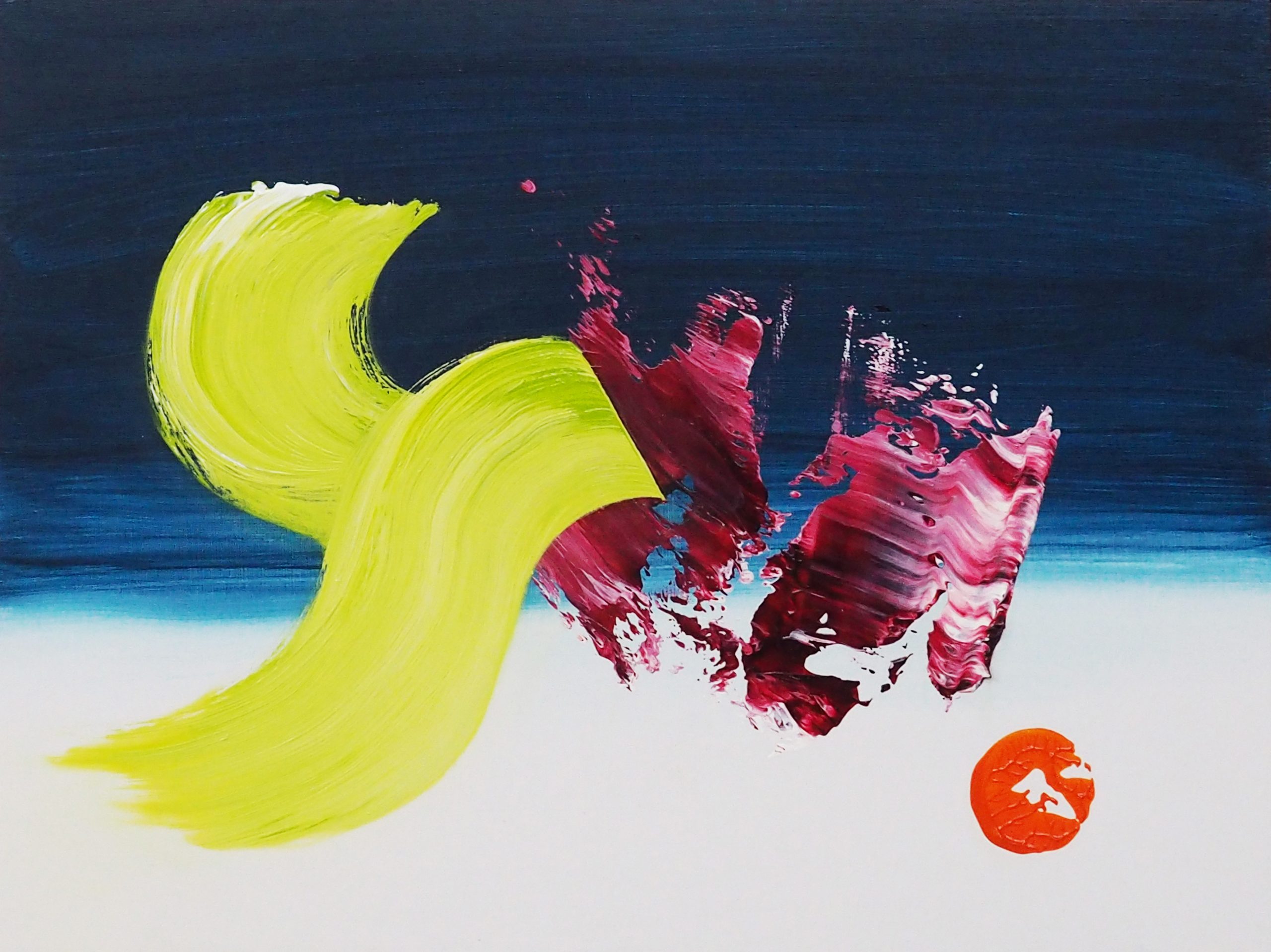
|
Magnetism |
Oil on panel |
30cm x 40cm |
2020 |
K: Is the scale of your new works part of the experimentation or a very conscious element of the work?
M: Flux, was a response to a call-out for a show called Size Matters. The curator Mark Fearbunce, set a size limitation of 5 cm x 5 cm and I decided on a wall installation of multiple mini paintings on small wooden blocks. I used it as a chance to really explore some very intense and eye-popping juxtapositions of colour, which is a big departure from my earlier work. Pixels was a follow-on from that, in trying to see if I could do a similar thing with drawing media. I found the small size interesting because it intensifies every mark you make.
Creative Choices
Do you make hyperconscious creative choices regarding composition or does abstraction allow a greater scope for the subconscious/right brain to takeover?
Each layer is an improvisation
I would say that I am probably more conscious now about composition. With the earlier works, the composition was worked out before starting, but with these abstracts, each layer is an improvisation so the composition evolves over time.
I work on several paintings at one time.
I work on several paintings at one time. Oil paint takes a long time to dry, so I usually need each layer to be totally dry before I can add the next layer. It’s probably a combination of right and left brain thinking when I am working out what to do next, because there is an internal monologue going on, I am also having to imagine in advance, the effect of a particular colour or painting tool. What actually happens when I apply the paint isn’t always what I was expecting and sometimes I’m happy with it; other times, I need to manipulate it or add more or wipe it back a bit. I think that at this point in the process, actually manipulating the paint, I am probably using my right brain.
.
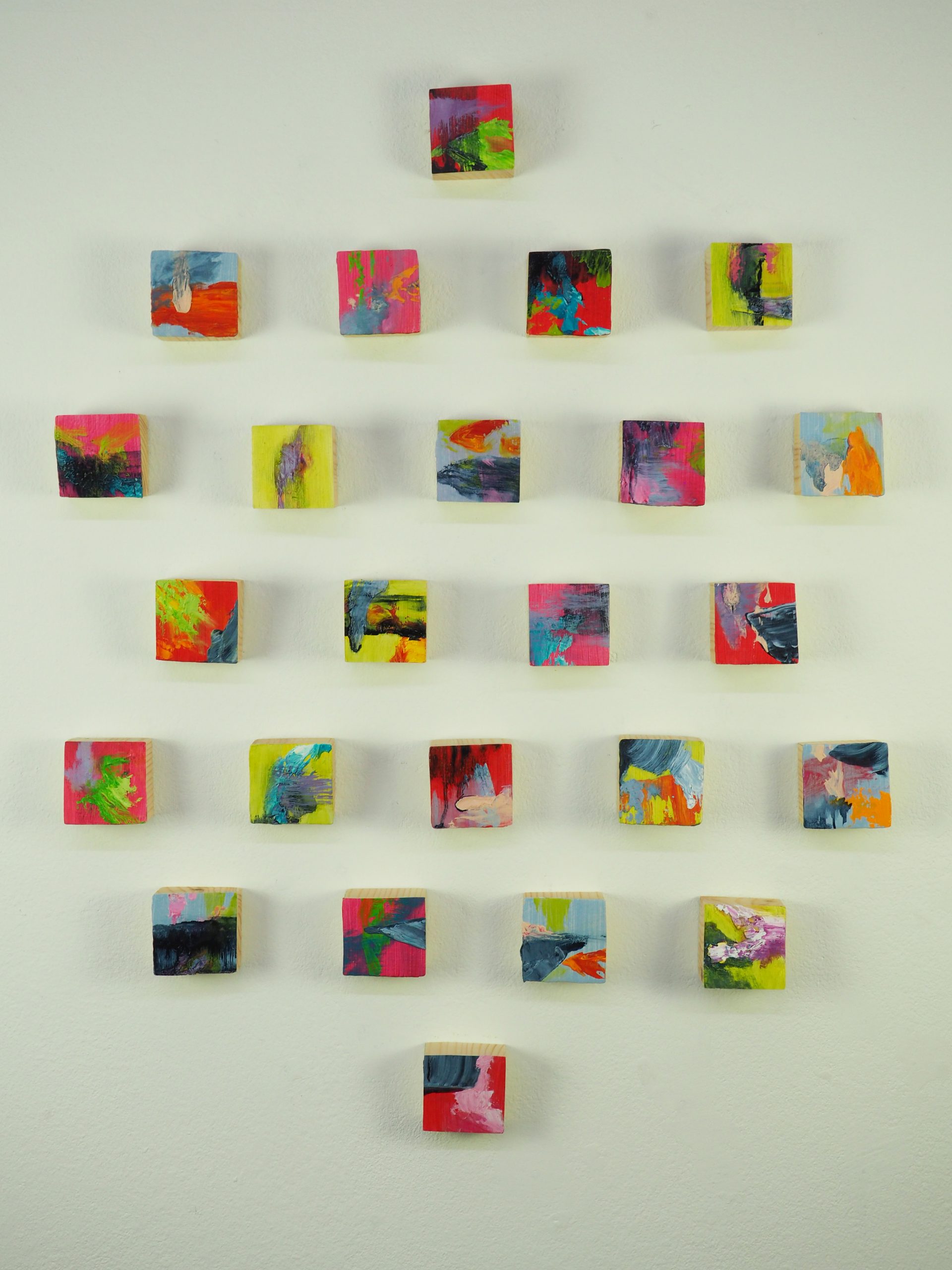
| Flux | Oil on wood | Approximately 67cm x 54cm | 2019 |
In the moment
What are the major differences in praxis between your photo-memory based body of work and your new direction?
I feel a greater sense of freedom in making these works. My earlier works were dealing with memory and loss, so there was generally a stillness and a sense of mourning or nostalgia. However, these abstracts have a more exuberant energy, they’re more dynamic and “in the moment”. I’m having to think a bit harder about making these paintings because I have to completely invent and improvise as I go. The biggest differences since starting these new abstract works, (apart from jettisoning subject matter) is exploring very bold contrasting colours, and the full range of textures and thicknesses of paint. Sometimes, when I make a mark or shape, it suggests something in the real world, and this often leads to the title. Although I don’t start with the conscious intention of representing something, I’m open to the idea that the subconscious might influence things. I think abstraction can be compared with poetry, or with instrumental music, where certain thoughts or emotions are conveyed, but not in an immediate, literal or descriptive way. You have to give it some time, and let it wash over you.

|
Flux Detail |
Oil on wood |
50mm x 50mm |
2019
|
Inspiration
What inspires you?
In terms of shape and form, the complexity of microscopic worlds or the rock patterns formed millions of years ago are really fascinating. Although there is no subject matter per se in my works, I think we are evolved to find meaning, pattern or form in things which are random and incomprehensible to us, like seeing faces, creatures and objects in clouds on a sunny day.
I am also interested in the intense eye-popping colours so often found in our technology-driven world that are designed to dazzle and seduce. I feel ambivalent about it in a way; I guess I’m both responding to it and competing with it, but I’m making something for “slow looking” not something to scroll past on a phone.
These colours are flashy and attention-seeking, but they do occur in nature for exactly that reason, in many cases as warnings or to attract pollinators or even prey. Also, pure, highly saturated colours, especially several contrasting with each-other, do seem to convey a sense of energy and positivity. I feel a positive emotional boost when working with those colours, that’s what I’m hoping to share.
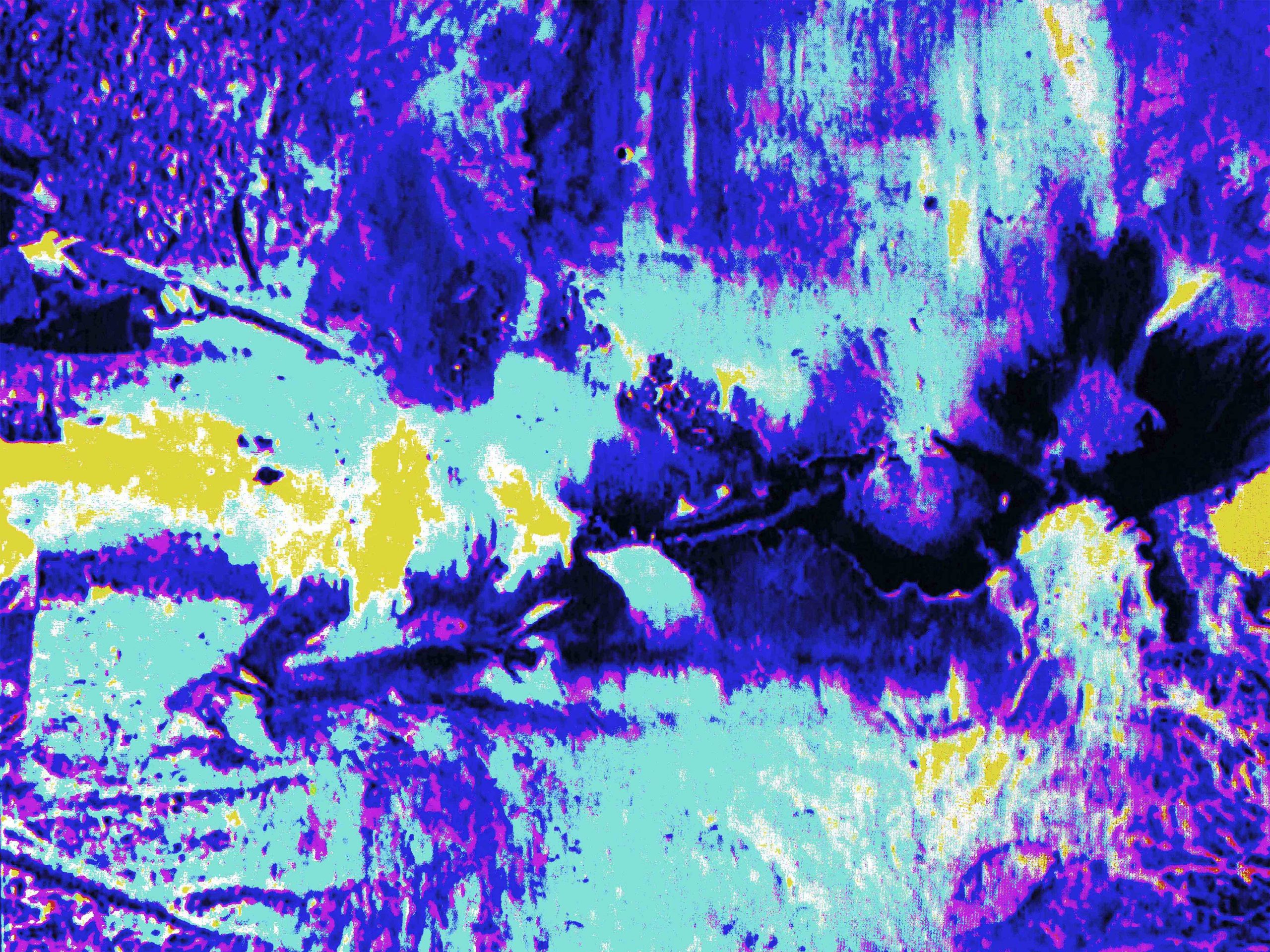
|
Ned 5 |
Digital painting, C-Type print on Kodak Metallic paper |
12 x 16 inches, mounted on foamex |
2018/19 |
Do your abstract paintings happen all at once or do you add/subtract over time until you are satisfied with them?
Sometimes I just sit and look at them for a long time.
With nearly all of the works, I have to live with them for a while before I work out what to do next, whether it’s adding something, or removing it, so each work can take quite a while, months sometimes. I leave them up in my studio while I work on other paintings. Sometimes I just sit and look at them for a long time, thinking of different colours or techniques I could use next, a bit like a chess player working out all the moves they could make ahead of time. I usually know when they’re finished (or not), and having them sitting around for a while is a good way to be sure. It’s useful working on a number of paintings at once because each one feeds into the next.
|
Pixels |
Graphite and soft pastel on wood |
78.7cm x 67.7cm |
2019 |
Layers
Do you start your serial works from the point of view of the whole or from one of its parts? Are they intended to be viewed always as a whole or could they be stand alone pieces.
I tended to work on all of the paintings in a particular installation in a number of sittings, doing one layer on all of them one day, the second layer the next and so on. Each time I added a layer to an individual painting though, I had to respond to what was on that particular image in a different way to the paintings before and after, otherwise I would have just ended up with multiples of the same painting! They took a surprising amount of time and effort to make.
They are made as groups with a conscious decision about using a core group of colours which will all work together, but beyond the first layer, I work on each one as an individual painting. However, I don’t work out in advance which individual painting will go where in the final piece.
I intend them to be able to be seen as individual paintings or drawings too. I would expect that in viewing them, you would look at a few individual ones, and then the work as a whole.
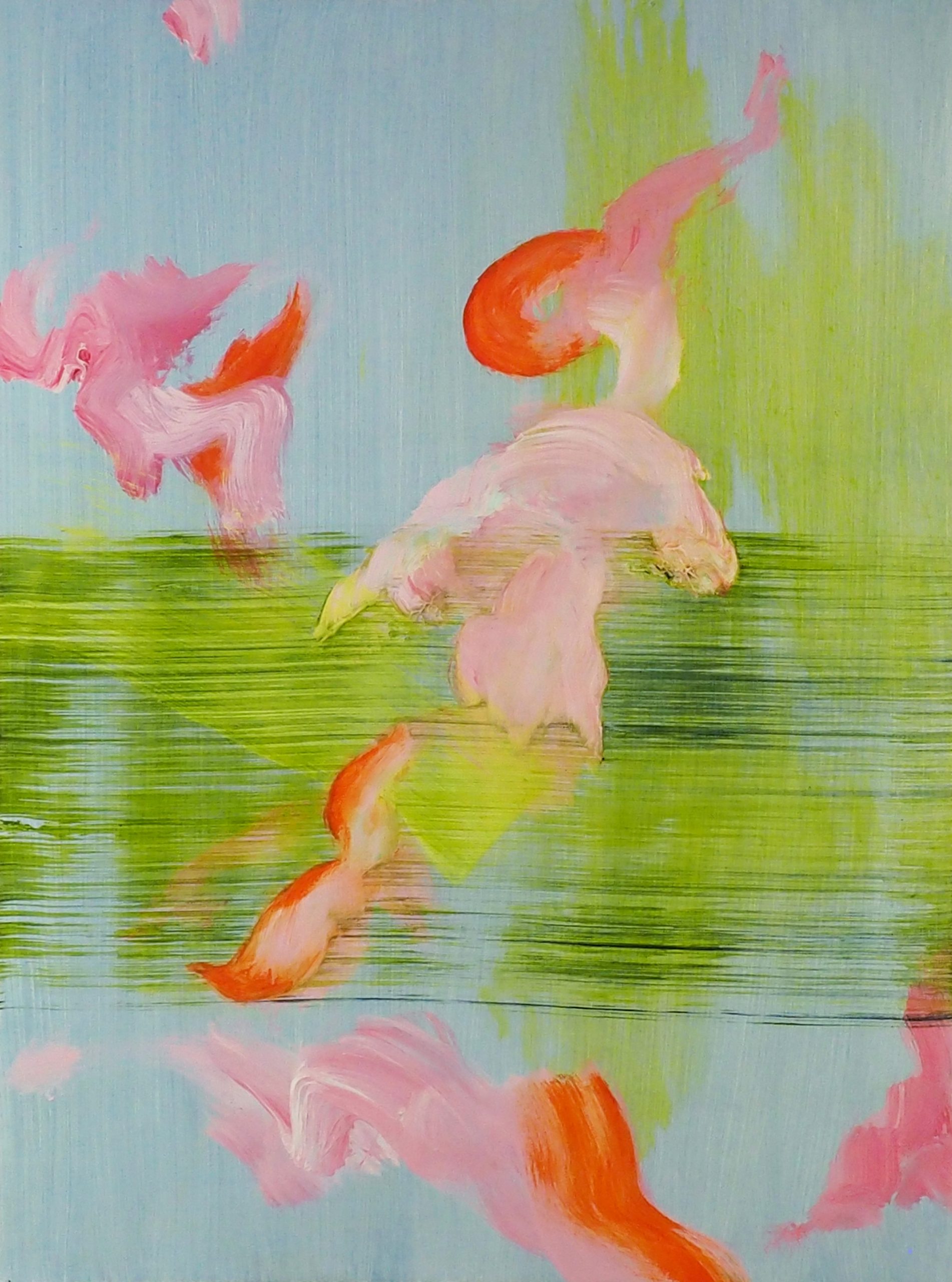
|
Nymph |
Oil on panel |
40cm x 30cm |
2020
|
What do you hope viewers will take away from your work?
I hope that the images may spark memories and feelings or emotions in someone looking at them. Even though each gesture or mark is a trace of a movement through time, I would like to think of the works as conveying something timeless; unknowable, incomprehensible or in constant flux. If my work can spark something hopeful or positive in anyone who looks at it, then that is a big plus.
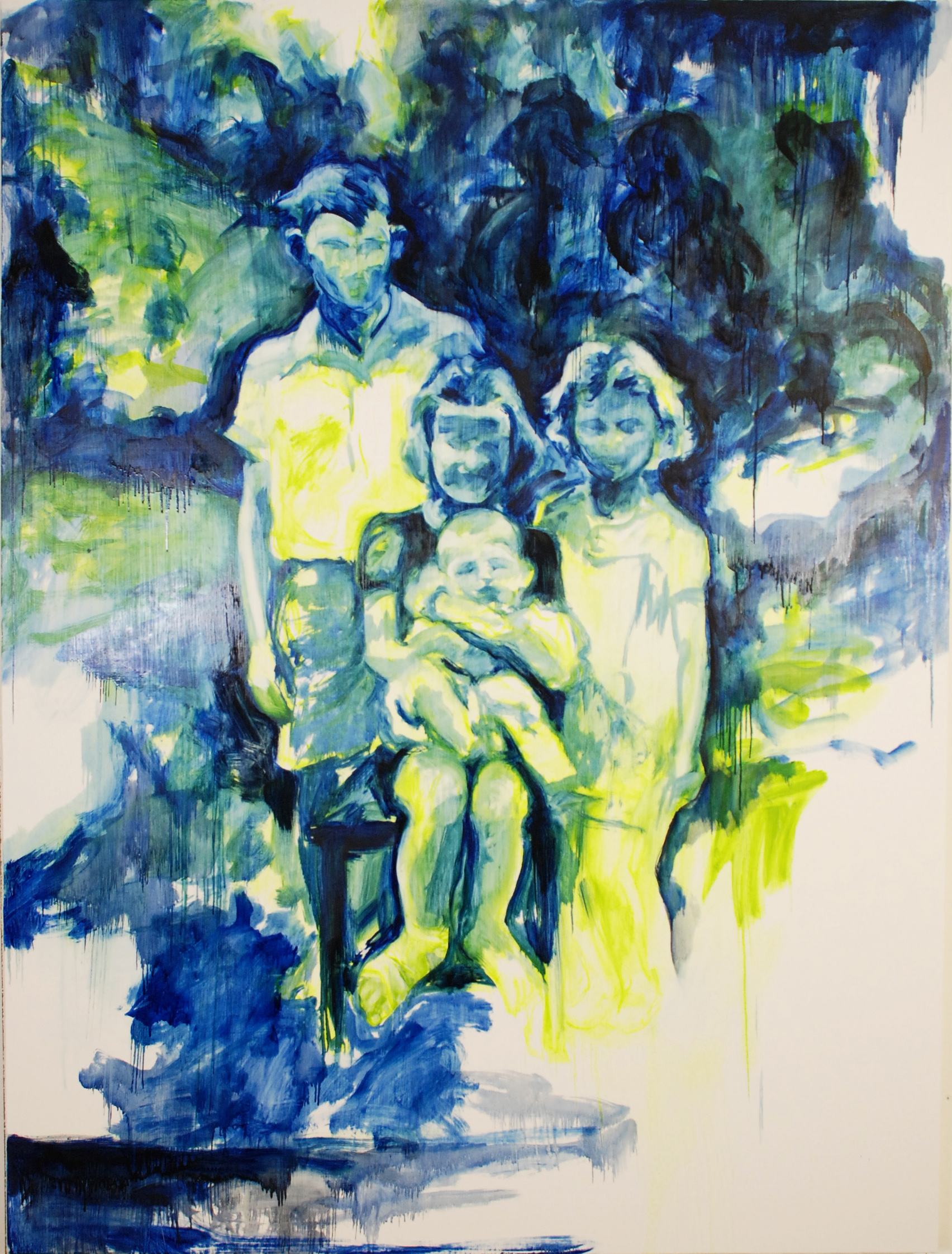
Barrington Tops |
Oil on canvas |
160cm x 120cm |
2013 |
The Future
Do you have any fixed idea about where your abstract journey will take you, or will you let it lead you?
No, I don’t really have any definite idea where it will take me! It’s still early days yet with this series of works, but I’m open to the idea that figuration might make a reappearance at least partially, at some point – I still love looking at, and drawing things in the real world. As you change over time, so does the kind of work you do, but it’ll be interesting to see how it evolves.
Melissa Wraxall lives and works in Bath Spa . You can see more of her work via her website melissawraxall.com Her current show can be found online on ReCultivate at www.organthing.com
Kate Burbidge is a world traveled walking thesaurus, art nerd and former professional beach bum with a background in languages and the arts, She has now settled on the south coast of the UK where she continues to write, edit, illustrate and photograph anything that crosses her path or her mind. Visit her website on pearsonandparish.com

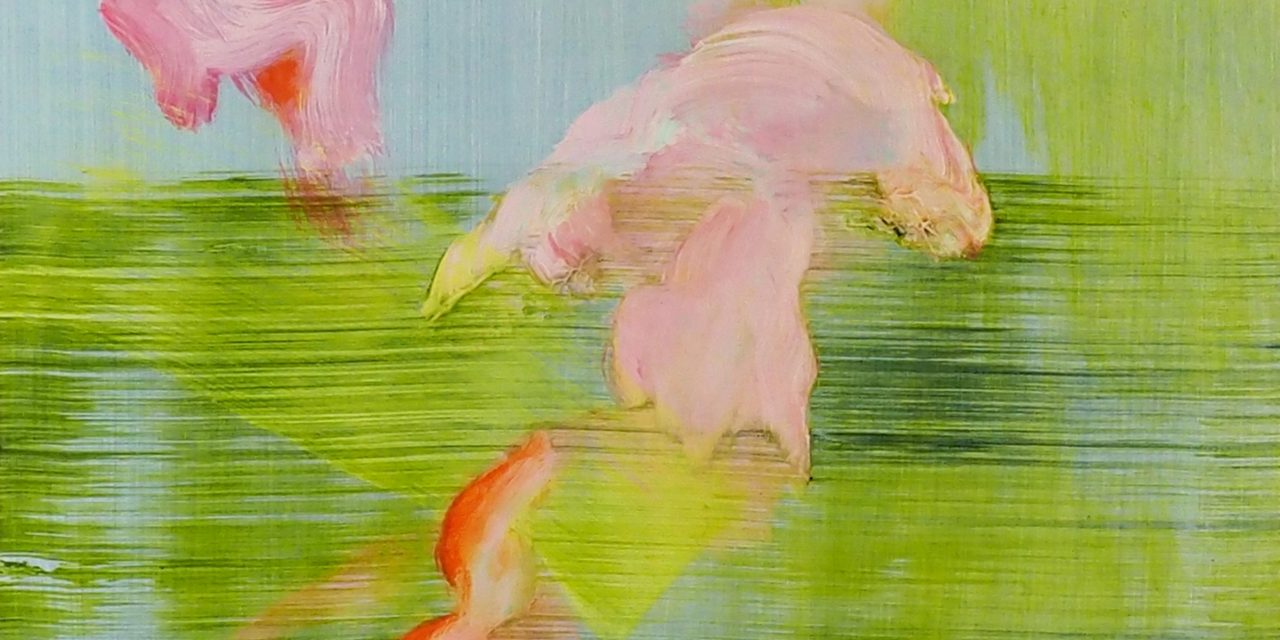
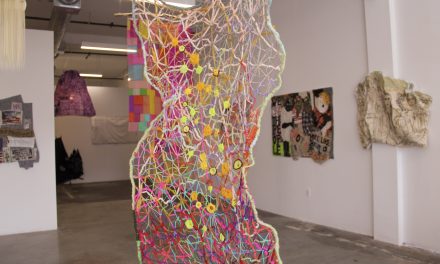

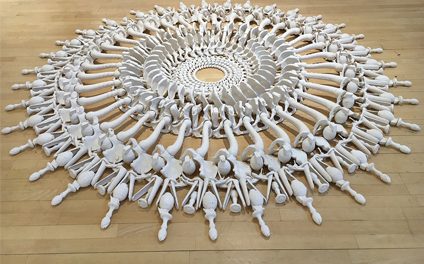
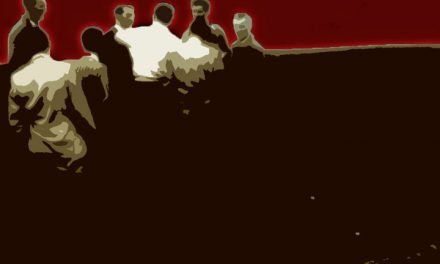
Recent Comments